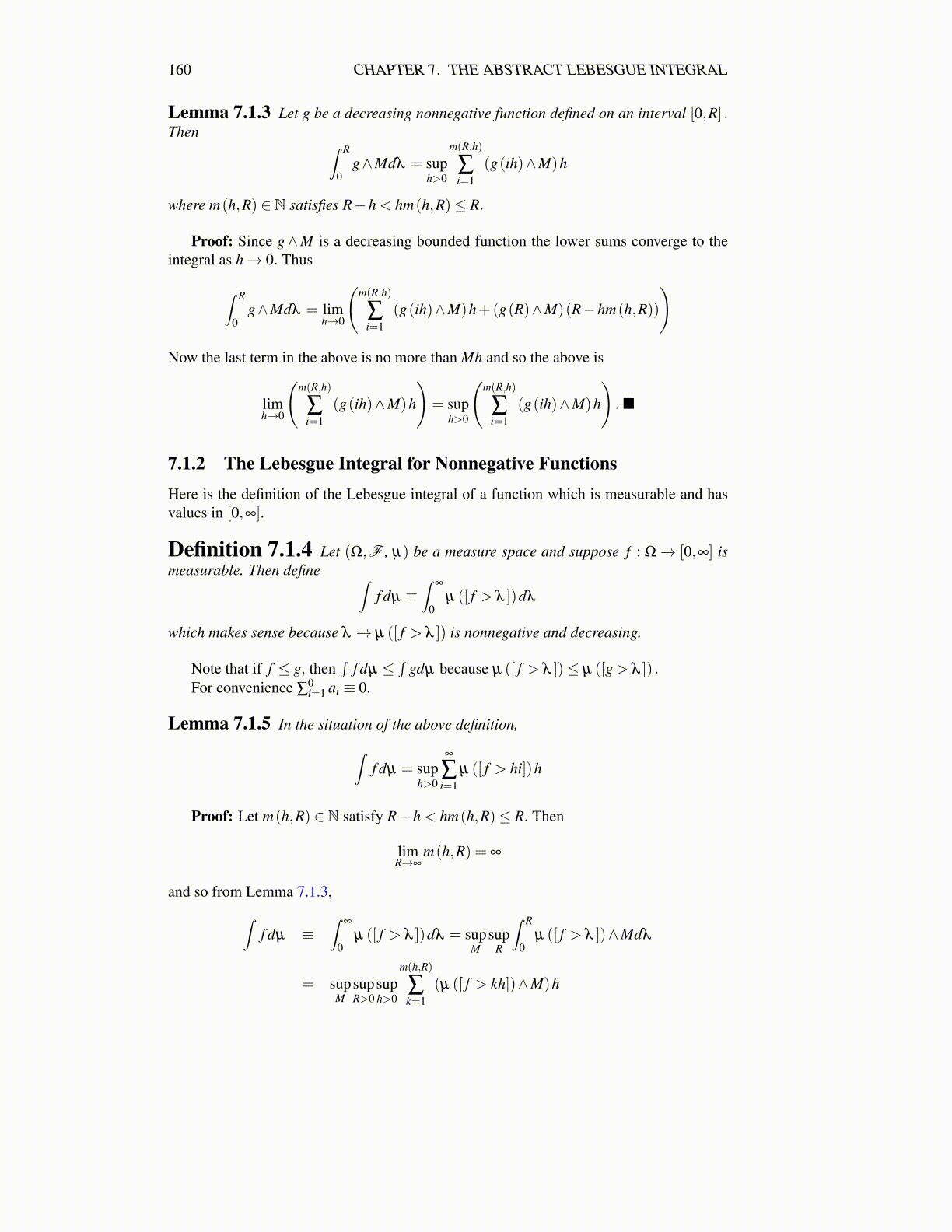
160 CHAPTER 7. THE ABSTRACT LEBESGUE INTEGRAL
Lemma 7.1.3 Let g be a decreasing nonnegative function defined on an interval [0,R] .Then ∫ R
0g∧Mdλ = sup
h>0
m(R,h)
∑i=1
(g(ih)∧M)h
where m(h,R) ∈ N satisfies R−h < hm(h,R)≤ R.
Proof: Since g∧M is a decreasing bounded function the lower sums converge to theintegral as h→ 0. Thus
∫ R
0g∧Mdλ = lim
h→0
(m(R,h)
∑i=1
(g(ih)∧M)h+(g(R)∧M)(R−hm(h,R))
)
Now the last term in the above is no more than Mh and so the above is
limh→0
(m(R,h)
∑i=1
(g(ih)∧M)h
)= sup
h>0
(m(R,h)
∑i=1
(g(ih)∧M)h
).■
7.1.2 The Lebesgue Integral for Nonnegative FunctionsHere is the definition of the Lebesgue integral of a function which is measurable and hasvalues in [0,∞].
Definition 7.1.4 Let (Ω,F , µ) be a measure space and suppose f : Ω→ [0,∞] ismeasurable. Then define ∫
f dµ ≡∫
∞
0µ ([ f > λ ])dλ
which makes sense because λ → µ ([ f > λ ]) is nonnegative and decreasing.
Note that if f ≤ g, then∫
f dµ ≤∫
gdµ because µ ([ f > λ ])≤ µ ([g > λ ]) .For convenience ∑
0i=1 ai ≡ 0.
Lemma 7.1.5 In the situation of the above definition,∫f dµ = sup
h>0
∞
∑i=1
µ ([ f > hi])h
Proof: Let m(h,R) ∈ N satisfy R−h < hm(h,R)≤ R. Then
limR→∞
m(h,R) = ∞
and so from Lemma 7.1.3,∫f dµ ≡
∫∞
0µ ([ f > λ ])dλ = sup
Msup
R
∫ R
0µ ([ f > λ ])∧Mdλ
= supM
supR>0
suph>0
m(h,R)
∑k=1
(µ ([ f > kh])∧M)h